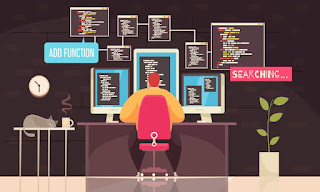Building a Scalable Computer Vision System for Manufacturing Efficiency
Traditional manual inspection techniques often struggle to keep up with the massive influx of data. Issues such as production downtime, safety incidents, and quality control failures significantly impact operational efficiency. Computer vision in manufacturing provides a robust solution to tackle these challenges. Establishing a scalable computer vision platform is essential for widespread adoption across industries. With its potential to address various challenges, vision AI is expected to enhance production efficiency by nearly 40%.
In this blog post, we will explore the impact of computer vision in manufacturing and its role in transforming industries. We will examine the key aspects of building scalable computer vision for defect detection in large-scale industries. As one of the most significant technological advancements globally, Artificial Intelligence is redefining business operations. Companies are increasingly recognizing that traditional manual supervision models are becoming outdated and inefficient. By integrating computer vision models, businesses can streamline operations and improve productivity.
This article delves into various technology solutions for scaling at different levels, emphasizing the importance of scalability for enterprise-ready solutions.
What is a Scalable Computer Vision System?
Computer vision, a subset of artificial intelligence, enables machines to identify objects, people, and events in real-time. A scalable computer vision system ensures AI solutions reach their full potential. Advanced computing infrastructure is required to process continuous streams of visual data, making deployment seamless. User-friendly computer vision platforms allow enterprises to scale AI-driven solutions efficiently, facilitating widespread adoption across various industries.
Leveraging the Power of Computer Vision in Manufacturing
Computer vision technology enables machines to analyze image and video data at high speeds with unparalleled accuracy. Key features include object identification, image segmentation, real-time monitoring, data visualization, and image recognition. Below, we explore the various ways vision AI models have transformed manufacturing infrastructure:
1. Predictive Maintenance
In manufacturing, maintenance plays a crucial role in ensuring operational efficiency. Timely equipment check-ups help prevent breakdowns and minimize downtime. Traditional maintenance methods, however, are time-consuming and costly. Machine learning tools analyze video footage in real-time to predict potential equipment failures. According to McKinsey, AI-driven predictive maintenance can reduce maintenance costs by up to 40% and cut downtime by 50%.
2. Quality Control
Computer vision-driven quality control solutions significantly enhance manufacturing efficiency. AI models detect defects in production lines in real-time, reducing reliance on manual inspection. By analyzing images from cameras, computer vision minimizes human error and improves product quality. Automated defect detection systems provide instant feedback, allowing manufacturers to adjust production processes and maintain high-quality standards.
3. Process Optimization
AI-powered computer vision models help manufacturing businesses inspect the smallest product details, identifying faults and minimizing errors. These systems optimize operations by collecting and analyzing process sequence data from video footage captured by IP cameras. The extracted insights help businesses enhance productivity, improve product quality, and reduce operational costs. Computer vision technology ensures manufacturers achieve higher efficiency and precision in their workflows.
4. Real-time Safety Monitoring
Safety compliance is a top priority in manufacturing environments. AI-powered object detection systems identify hazardous conditions, unsafe worker behavior, and PPE non-compliance in real-time. These systems proactively detect risks and ensure safety protocols are followed. By leveraging AI-driven monitoring, manufacturers can create safer workplaces and reduce accidents.
Challenges in Scaling Computer Vision for Manufacturing
While computer vision holds immense potential for industrial automation, scaling these solutions comes with challenges:
1. Computational Resources
Advanced AI algorithms require significant computing power, particularly for processing large volumes of visual data. Deploying edge computing solutions can help reduce computational load, but implementation at scale presents additional challenges related to infrastructure and technology deployment.
2. Model Training
AI models require extensive datasets for training. Collecting and labeling this data is time-consuming and expensive. Furthermore, implementing and maintaining trained models demands specialized expertise. Effective model management and deployment strategies are essential to ensuring consistent performance.
3. Integration with Existing Systems
Manufacturing facilities rely on complex operational networks, making seamless integration of computer vision solutions a challenge. Interoperability issues and data exchange concerns must be addressed to ensure smooth adoption. Scalable computer vision platforms should be designed to work harmoniously with existing manufacturing systems.
Core Elements of Scalable Computer Vision Technology
A robust computer vision system comprises several key components that ensure its scalability and effectiveness in industrial applications:
Monitoring & Management Tools – AI-driven tools for tracking and analyzing real-time data.
Advanced Algorithms & Models – Machine learning models for accurate object detection and defect identification.
Modular & Microservices Architecture – Flexible frameworks that allow seamless integration with existing infrastructure.
Data Acquisition & Management – Efficient data processing capabilities for analyzing image/video inputs.
Edge Computing – Reducing latency by processing data closer to its source.
Cloud Infrastructure – Enabling scalable storage and AI processing power for large-scale deployments.
Future of Scalable Computer Vision Systems
A scalable computer vision platform helps manufacturers adopt data-driven decision-making, allowing them to navigate uncertainties while staying ahead of demand. In the coming years, computer vision is expected to integrate seamlessly with advanced AI models, edge computing, and real-time data processing. Continuous improvements in AI and machine learning will drive further enhancements in manufacturing efficiency.
Several platforms now enable businesses to integrate computer vision with their existing analytics tools, amplifying data insights and decision-making processes. Investing in a scalable computer vision system is a strategic move for large-scale manufacturing operations, allowing companies to overcome traditional constraints while improving quality, security, and efficiency.
Final Thoughts
To fully leverage the potential of computer vision technology, manufacturers must invest in scalable AI-driven solutions. AI-powered computer vision enables real-time monitoring, automated inspections, and process optimization, significantly enhancing operational efficiency. Managing large-scale applications across multiple locations requires advanced data analytics and integration capabilities.
Nextbrain offers a comprehensive approach to managing and scaling vision AI applications for manufacturing. Our AI Video Analytics software is designed to automate operations and provide real-time monitoring, ensuring seamless integration with manufacturing workflows.
Are you ready to embrace scalable computer vision solutions for your manufacturing industry? Connect with our experts today to learn more about how vision AI can revolutionize your operations.
.png)
%20(1).jpg)


Comments
Post a Comment